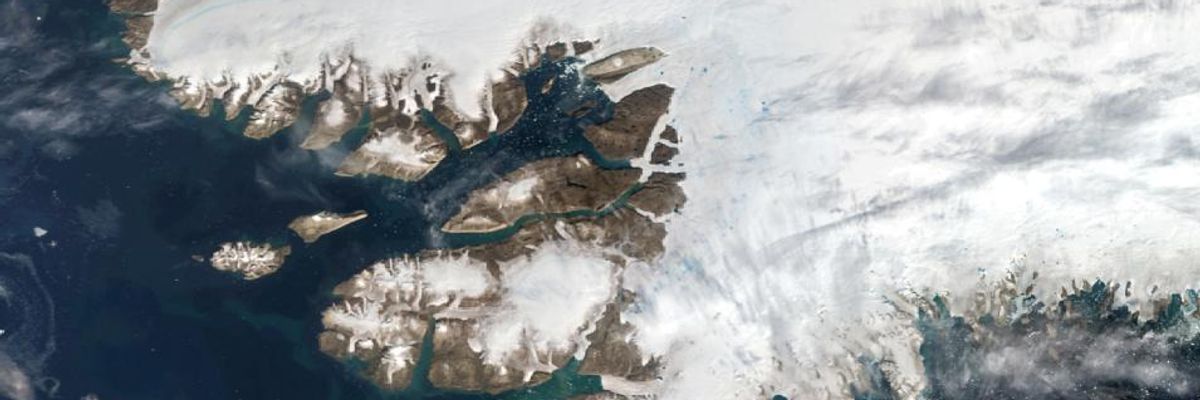Google Earth's new Timelapse feature, released Thursday, provides a bird's eye view of nearly four decades of environmental transformation, allowing viewers to see how the climate emergency, a planetary crisis driven by fossil fuel-powered capitalism, has unfolded since 1984.
The new tool "was inspired by a desire to show us precisely what climate change looks like," according toVogue.
Rebecca Moore, a director of Google Earth, wrote Thursday in a blog post that "visual evidence can cut to the core of the debate in a way that words cannot and communicate complex issues to everyone."
As Vogue reported:
Using 24 million satellite images representing quadrillions of pixels compiled over the course of 37 years (thanks in large part to NASA), TimeLapse is an interactive, 4-D experience that illustrates how certain areas of the planet have changed incredibly quickly. Watch how sea ice in Greenland has melted as the planet warms, contributing to global sea level rise; how deforestation in the Amazon has intensified in the past 20 years; how the Aral Sea has dried up to a fraction of its size since the early 2000s; how decades of bushfires have impacted Yellabinna, Australia. You can watch skylines pop up seemingly overnight in Naypyitaw, Myanmar, and Dubai, UAE, alluding to the environmental costs of rapid urbanization.
According to Kate Brandt, Google's sustainability officer, "These kinds of poignant visuals play a really important role in the environmental movement."
"I think a lot about the 'Earthrise' image the Apollo 8 crew took in 1968, with the Earth rising over the lunar horizon--people often credit that as a catalyst of the modern environmental movement, because we suddenly [grasped] the fragility and preciousness of the planet," Brandt told Vogue.
"Photos of the Cuyahoga River burning in 1969 because it was so polluted captured people, too," she added. "It led to water regulation and ultimately the founding of the Environmental Protection Agency. We think about Timelapse as having a similar power to educate, inspire, and show people visually what's been happening on our planet."
To see "what's been happening" to our fragile and precious planet, explore Google Earth's Timelapse feature, a powerful new tool depicted in this video:
"There's a place in our universe. How we decide to treat it today will determine our future," the narrator says. "What will you think, what will you do, when you see our world changing before your own eyes?"
Google also created videos that focus on the specific consequences associated with the degradation of oceans and forests, as well as the rapid expansion of cities.
Watch how oceans have changed:
Watch how forests have changed:
Watch how cities have changed:
As Vogue noted: "Brandt is quick to mention Timelapse isn't just a reel of bad news. In Rondonia, Brazil, we can see how the Surui people have protected their home from deforestation, or how China has installed hundreds of solar farms across its landscape."
"We've impacted the planet so much in just 37 years, but this also points to ways we can make a positive impact," Brandt told the magazine. "Science tells us we have to in the next decade. We want this to be very visceral and real for people, and a ray of hope that there's actually a lot we can do."

